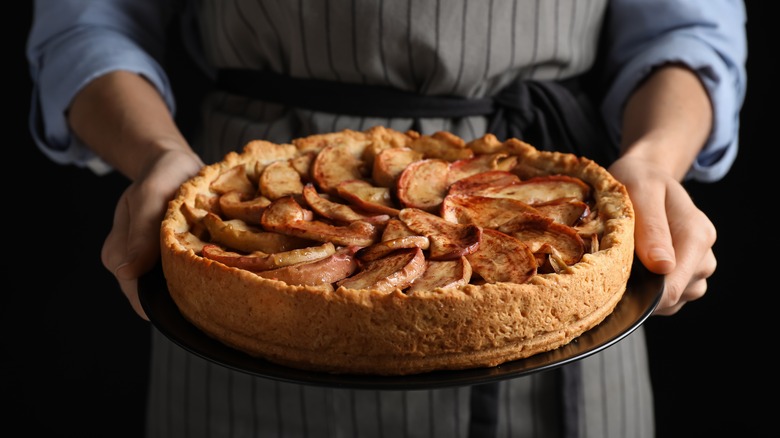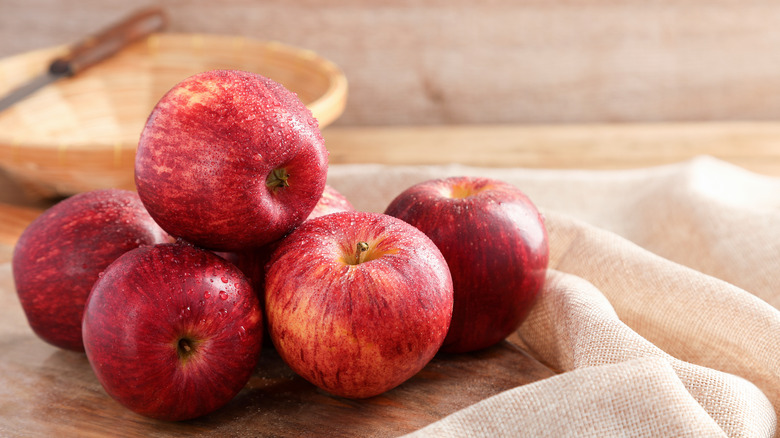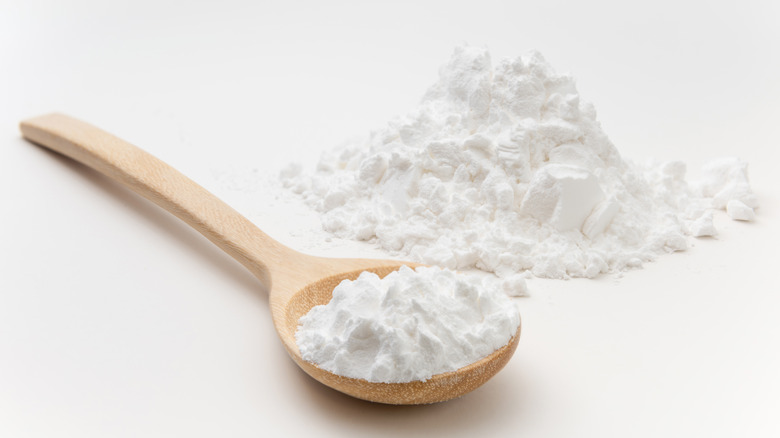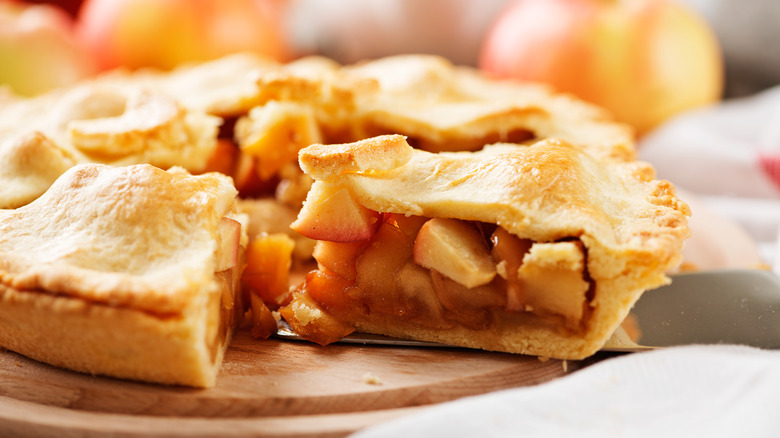The Best Ways To Avoid Wet Apple Pie
Few things are as universally comforting as apple pie. From the Thanksgiving dinner table to the August picnic blanket, apple pie is a year-round staple that we show up with at parties to say, "It's so nice to be together." According to the Smithsonian magazine, roughly 186 million pies are purchased in American grocery stores every year — and homemade is just as good, if not better.
But, when it's time to sit down with friends and a cup of coffee, nobody wants to plunge their fork into soggy pie crust. In spite of its reputation as a beloved, homey favorite, apple pie also has a reputation as turning out inedibly wet, well, pretty often — often enough to gain a specific bad rap for it.
Luckily, there are several techniques home bakers can implement to make sure their apple pie comes out of the oven a Thomas Kinkade classic every time –- or at least, as often as you're ready to go out and socialize. (Apple pie is a dish well-served solo, for the record.)
Select the right apples — and prepare them right, too
A dish can only be as good as the sum of its ingredients. For a tender finished product that still retains its shape, selecting the right type of apple is crucial. Softer varieties like Red Delicious, Gala, or Macintosh apples break down too much in the heat of the oven, reports Today, basically turning into applesauce. Avoid using these in your pie.
For a successful pie, grain expert Bob's Red Mill recommends using Granny Smith, Honeycrisp, or Golden Delicious apples. These varieties are all firm enough to withstand the heat of the oven, and they each vary slightly in taste and seasonal availability; Granny Smith is tart, Honeycrisp is sweet, and Golden Delicious is distinctly apple-y. There are reliable options for every palette and time of year. The ripeness of your apples is also hugely important in preventing a wet pie. According to HuffPost, very ripe fruit should only be used in chilled pies, not baked into pies. To avoid sogginess, use firm, almost underripe apples in your pie.
Even dice size can impact a pie's overall wetness. Although it might be convenient to toss those apples in the food processor and call it a day, Prevention advises against it. Ultra tiny apple pieces liquefy in the oven, it says, creating mush instead of a filling. Instead, it recommends chopping apples into ¼-inch slices: thick enough for them to stay intact, but thin enough that they'll soften up in the oven.
Use a thickener in your filling
If your apple pie filling seems a little thin in the bowl, it might be a good idea to incorporate a thickener into the mix. According to Eating Well, thickeners work by binding to water molecules as the filling cooks, thereby absorbing any excess moisture. One of the most common thickeners in the home baker's arsenal is tried-and-true cornstarch slurry. To make a slurry, combine one tablespoon cornstarch and two tablespoons water; whisk vigorously, or add both to a sealed jar and shake. Then, incorporate the slurry into the wet ingredients of your pie filling to thicken.
Many bakers are comfortable and familiar with using flour as a thickener, but for pies, maybe it shouldn't be your first choice. To make an equally as effective thickener, you'd need to use twice as much flour as you would cornstarch, per Martha Stewart. Not only that, but too much flour will also turn crystalline fruit pie filling cloudy, lumpy, and distinctly flour-tasting.
Instead, Baking Kneads recommends an unlikely favorite as a thickening agent: instant pudding mix. Instant pudding mix affects not only the flavor, but also the texture of a fruit pie filling. The secret ingredient, it says, is the gelatin; it helps the apple pie to firm up. For a burst of unexpected taste, Baking Kneads recommends using lemon-flavored instant pudding mix to complement the apples.
Don't slice your pie too soon
Even if everything else goes exactly right during the baking process, you can still end up with a soggy pie at the very end. Brutal, right?
It might be tempting to cut into that warm, aromatic apple pie the instant it comes out of the oven, but hold off. Slicing open a still-setting pie can ruin the filling before it even has a chance to set up; the filling will thicken as it cools, per Eating Well. It recommends letting your pie rest for at least an hour before serving. Waiting even longer is a safer bet (if you can manage it). Cake Decorist proposes that fruit pies should cool for much longer: at least four hours, to thoroughly set up.
The best way to cool pies is on a cooling rack, says Epicurious, because it allows air to circulate completely around and under the pie pan. This thorough ventilation prevents heat from getting trapped and creating a soggy pie bottom. Even if your pie is supposed to be served warm, it warns, cutting in too soon is likely to make the pie crumble or fall apart. Patience is a virtue, and apple pie is holy.



